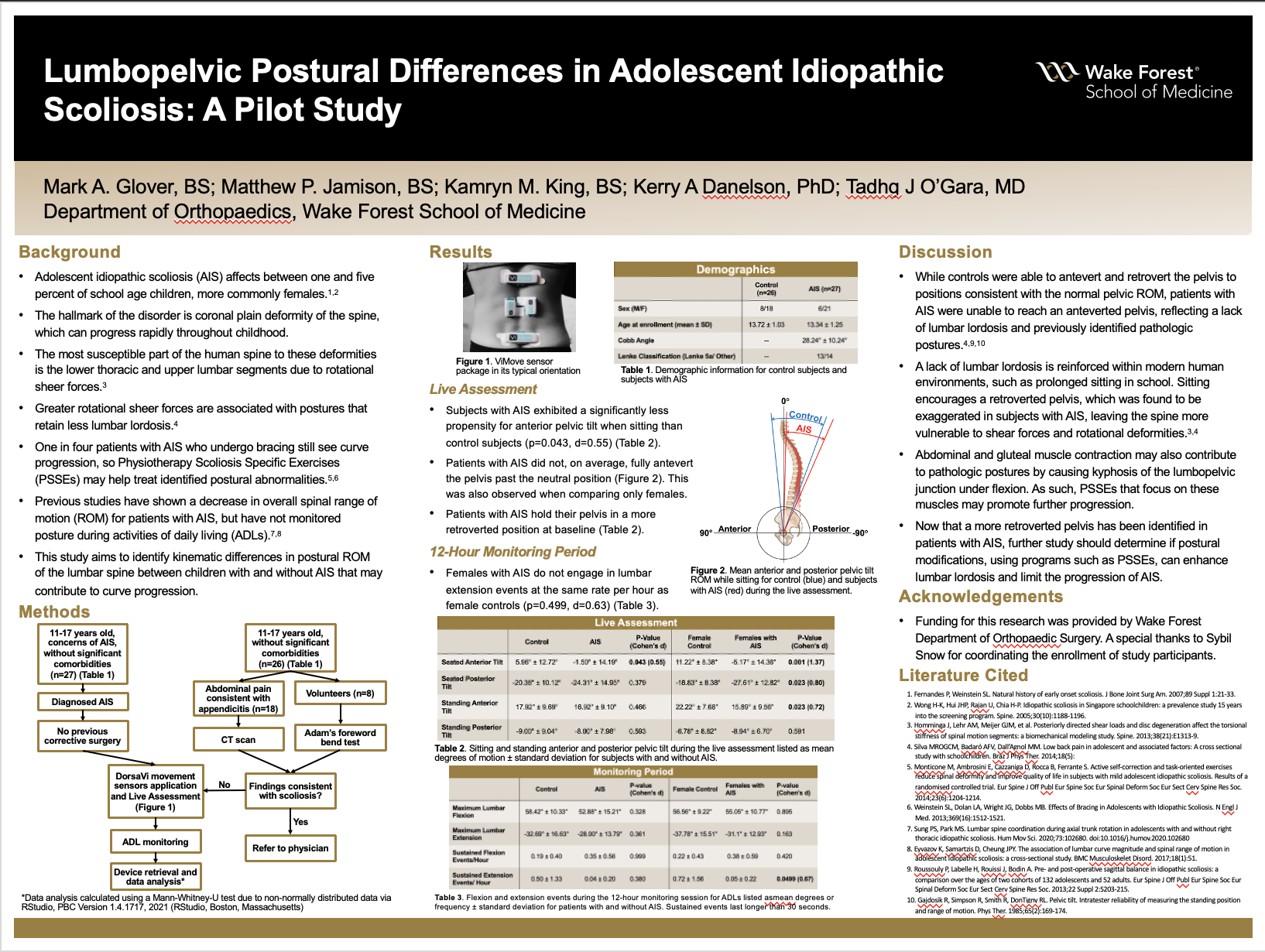Lumbopelvic Postural Differences in Adolescent Idiopathic Scoliosis: A Pilot Study
Background: Adolescent idiopathic scoliosis (AIS) is the abnormal coronal plane curvature of the spine that does not have a congenital or neurologic cause. A primary etiology of AIS is currently unknown but environmental biomechanical factors are suspected. Poor postural control of the spinal extensor musculature has been identified as an AIS risk factor and many Physiotherapy Scoliosis Specific Exercise (PSSE) programs have been developed. There is debate regarding the precise postural behaviors that should be modified.
Hypothesis: AIS subjects will retain an anteverted lumbopelvic with less range of motion than controls subjects.
Methods: This prospective cohort pilot study consisted of 27 subjects with AIS and 26 controls aged 11-17 years. Subjects had their LP posture assessed and monitored using the ViMove DorsaVi sensor package. Both groups underwent a calibration live assessment to obtain initial lumbopelvic (LP) range of motion (ROM) measurements. Subjects were then monitored while continuing with normal activities of daily living (ADLs) for 12 hours.
Results: During the live assessment, all controls exhibited a significantly greater anterior pelvic tilt ROM in the sitting position than the AIS group (p=0.0433). When compared to just female controls, females with AIS had a sitting pelvic tilt ROM that was significantly more retroverted (p=0.0232) and less anteverted (p=0.0010). During ADLs, female controls exhibited a higher total number of extension events than their female AIS counterparts (p=0.0263). These associations did not strengthen with greater spinal deformity.
Conclusions: AIS patients do not antevert the pelvis as much as control patients, both during a live assessment and during a 12-monitoring period. Further study is needed to determine why AIS patients have a higher likelihood of adopting this postural and kinematic difference.
Source of mentor’s funding or other support that funded this research: Wake Forest Baptist Health; Orthopedic department.
 CLOSE SIDEBAR
CLOSE SIDEBAR
